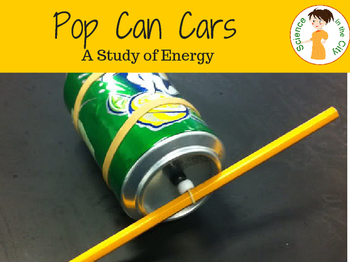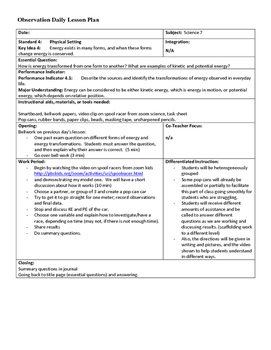Potential and Kinetic Energy STEM Activity
- PDF
- Easel Activity
What educators are saying
Description
Are you looking for a memorable, easy to implement, hands-on project to teach POTENTIAL and KINETIC ENERGY. This lesson works well with STEM and NGSS standards, and quickly engages students. Students will remember the concepts, explore using readily available household materials, and then synthesize their knowledge with follow up questions where students explore those concepts at a higher level.
See the concept in action here!
This includes:
- Lesson plan and accompanying lab handouts: students create a pop can car. They will read the procedure, create the car, test different factors to make it go faster/slower/farther, and then read and answer questions about their activity. (studying potential and kinetic energy).
Materials needed: pop cans, rubber bands, paper clips, beads, masking tape, dowels or unsharpened pencils.
You may also be interested in:
Physics of Sports Project and Presentation
Heat Transfer Foldable and Station Activity
★★★★★★★★
Don't forget that leaving feedback earns you points toward FREE TPT purchases.
Also, follow me and be notified when new products are uploaded.
Please feel free to contact me with any questions.
★★★★★★★★★★★★★★★★★★★★★
JOIN ME:
Science in the City Blog | Instagram | Pinterest | Facebook






